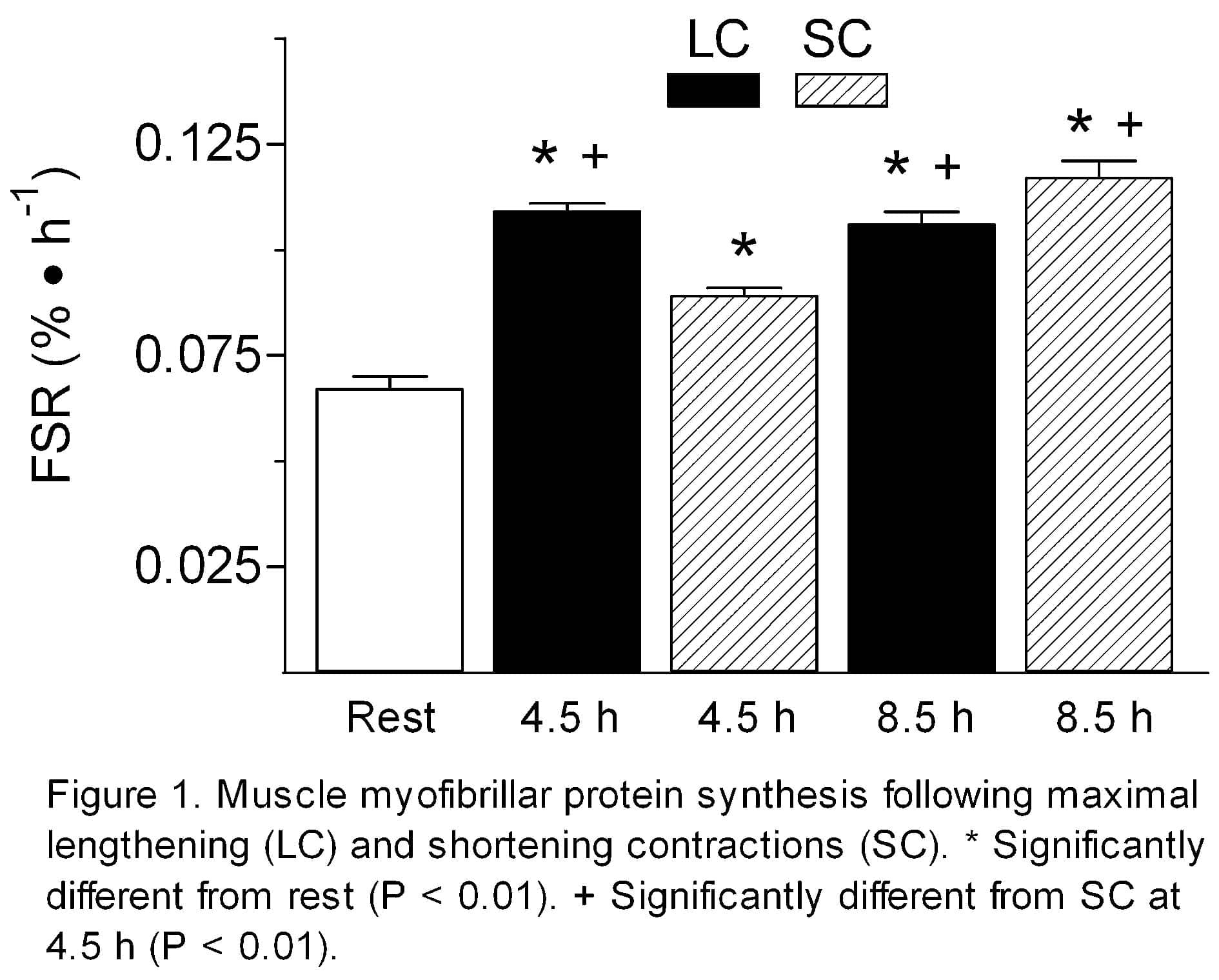We aimed to determine if there was any difference in the extent and time course of myofibrillar protein synthesis (MPS) after maximal muscle shortening (SC, average peak torque = 225 ± 7 N.m, means ± S.E.M.) or lengthening contractions (LC, average peak torque = 299 ± 18 N.m) with equivalent work performed in each mode. Eight healthy young men (21.9 ± 0.6 y, BMI 24.9 ± 1.3 kg.m-2) performed 6 sets of 10 maximal unilateral LC of the knee extensors on an isokinetic dynamometer. Then, with the contralateral leg they performed 6 sets of maximal unilateral SC with work matched to the total work performed during LC (10.9 ± 0.7 vs. 10.9 ± 0.8 kJ, P = 0.83). Whole body oxygen consumption (VO2) was recorded during both LC and SC to indicate oxidative ATP production. On a separate day the subjects were studied at rest; on both rest and exercise days the subjects were fed small intermittent meals of Myoplex LiteR (EASTM) to provide 0.1 g kg-1 h-1 of protein and 0.1 g kg-1 h-1 of carbohydrate. Quadriceps muscle biopsies were taken (2 % xylocaine anaesthesia) using the Bergstrom technique at rest and at 4.5 h and 8.5 h post-exercise. To determine protein synthesis we infused [1, 2-13C] leucine (prime 1.0 mg kg-1; 1.0 mg kg-1 h-1) and measured incorporation into myofibrillar protein by gas chromatography-combustion mass spectrometry using our standard methods.
Prior exercise elevated MPS above rest (0.067 ± 0.003 % h-1, P < 0.01) in both LC and SC, but was greater in LC than SC at 4.5 h (Fig. 1). At 8.5 h post-exercise, MPS remained elevated above rest but was not different between legs. VO2 was greater (P < 0.01) with SC (14.0 ± 1.4 l) as compared to LC (10.2 ± 0.6 l). Despite matching the total work performed in both the LC and SC protocols, maximal LC were accompanied by a more rapid rise in the post-exercise synthesis of myofibrillar protein than SC. This observation may be related to the lower energy cost of performing LC versusSC or some other as yet unknown factor.
This work was supported by research grants from Experimental and Applied Sciences (EASTM) and NSERC Canada, The Wellcome Trust, UK MRC and BBSRC.

